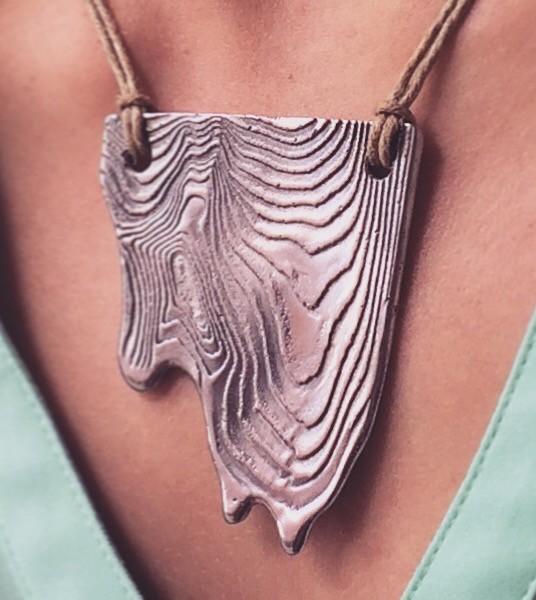
With a busy week behind you and the weekend within reach, there’s no shame in taking things a bit easy on Friday afternoon. With this in mind, every Friday TriplePundit will give you a fun, easy read on a topic you care about. So, take a break from those endless email threads and spend five minutes catching up on the latest trends in sustainability and business.
It's that time of year again: The Cradle to Cradle Products Innovation Institute and Autodesk announced the winners of their annual design challenge this week.
Now in its second year, the challenge seeks to inspire up-and-coming designers to create products for the circular economy — highlighting safe materials that can be perpetually cycled.
Global interest from the design community in rethinking products for the circular economy is continuing to escalate, said Institute President Lewis Perkins. And the organization received a record number of entries for this year's challenge.
A total of 162 professional designers and design students from 19 countries submitted work for the fourth round of the challenge. Participants were required to take a free two-hour, online course about designing for the circular economy, made possible by a partnership with the Alcoa Foundation. So, even those who don’t win will still walk away with an increased knowledge of cradle-to-cradle design.
“With a rapidly growing population and finite resources, now more than ever, it is necessary for designers and engineers to design for the circular economy, creating a future where we can live well and within the limits of our planet,” said Lynelle Cameron, senior director of Autodesk Sustainability and president and CEO of the Autodesk Foundation.
These four concepts -- from the innovative to the simplistic -- prove what's possible when today's best and brightest apply circular-economic thinking to everyday product design. Let's check 'em out.
REX
Winner: Best Student ProjectDesigned by Mallory Barrett of North Carolina State University, REX is stunning in its simplicity. The reusable, stainless-steel prescription bottle eliminates the need for the constant reproduction of plastic medication tubes. It also renders adhesive labels obsolete.
While those throw-away prescription bottles may not seem like a big deal, they can really add up: Americans filled more than 4 billion prescriptions in 2015 alone, and many U.S. recycling streams do not accept pill bottles.
The REX bottle uses a recycled stainless-steel frame and recycled plastic cap for a closed-loop supply chain. Once the prescription is used up, customers can simply remove the label and return the bottle to a drop-box at the pharmacy -- where it is sterilized for reuse.
Since the steel bottles can be reused indefinitely, "the rate of production of new bottles will decrease" in kind, Barrett wrote in her business plan.
Eco-Luggage
Winner: Best Professional ProjectOkay, we know what you're thinking: Another supposedly eco-friendly suitcase design? Before your eyes roll into the back of your head, take a moment to hear us out.
Eco-Luggage plays off the modular storage favored by today's busy traveler. It's versatile, with plenty of pockets for must-haves large and small. The rolling structure can be used separately as a carrying trolley. And the bag can be used without the structure for shorter trips.
But unlike other suitcases, all that modularity is good for more than creating space for a fourth pair of shoes: It also allows for easy repair and, ultimately, recycling.
Taina Campos and Jeremy Godol of Frame Design Studio put design for disassembly at the core of their approach. As individual components succumb to wear and tear, they can be easily removed or replaced as needed.
Each material was selected carefully, and all of the bag's components are either biodegradable or recyclable.
SolarCasting
Winner: Best Use of AluminumDeveloped by Bert Green, Allison Warth, Andrew Fabian and Ashleigh Otto of Solarmill, SolarCasting offers an innovative take on reclaiming and recycling aluminum.
The solar furnace harnesses the power of the sun to create products from recycled materials. Aluminum can be melted at fairly low temperatures, meaning the furnace can operate entirely using concentrated sunlight.
Once melted, recycled aluminum can be poured into molds to create anything from car parts to jewelry.
GPS-tracking and precise focus controls turn a "scavenged television lens into a powerful machine capable of producing highly detailed cast metal objects on a semi-industrial scale," the designers say in their business plan.
"By combining this 100 percent carbon-free foundry with recycled, lead-free aluminum, we are able to create an unbreakable chain of material reclamation without the need for fossil fuels." Pretty neat stuff.
Leave No Trace Leaf Knife
Winner: Best Use of Autodesk Fusion 360This simple, closed-loop innovation comes from camping enthusiasts Ari Elefterin and Matt Callahan of Parsons School of Design: The New School.
The 3-D printed Leaf Knife is the first product of the duo's Leave No Trace, a camping gear company for the circular economy. They developed an accompanying Leave No Trace service system, which provides replacement parts, care solutions and disposal options -- aimed at keeping product materials moving through a perpetual cycle of use and reuse.
The design duo modeled and sculpted their product using Autodesk’s Fusion 360 3-D printing technology -- allowing it to be completely disassembled for repair, part replacement and recycling.
The aluminum handle and steel blade are both 100 percent recycled and 100 percent recyclable -- enabling an entirely circular supply chain that reflects "the cultural and ecological values of the camping enthusiast," the designers said.
Images courtesy of the Cradle to Cradle Products Innovation Institute

Mary has reported on sustainability and social impact for over a decade and now serves as executive editor of TriplePundit. She is also the general manager of TriplePundit's Brand Studio, which has worked with dozens of organizations on sustainability storytelling, and VP of content for TriplePundit's parent company 3BL.














